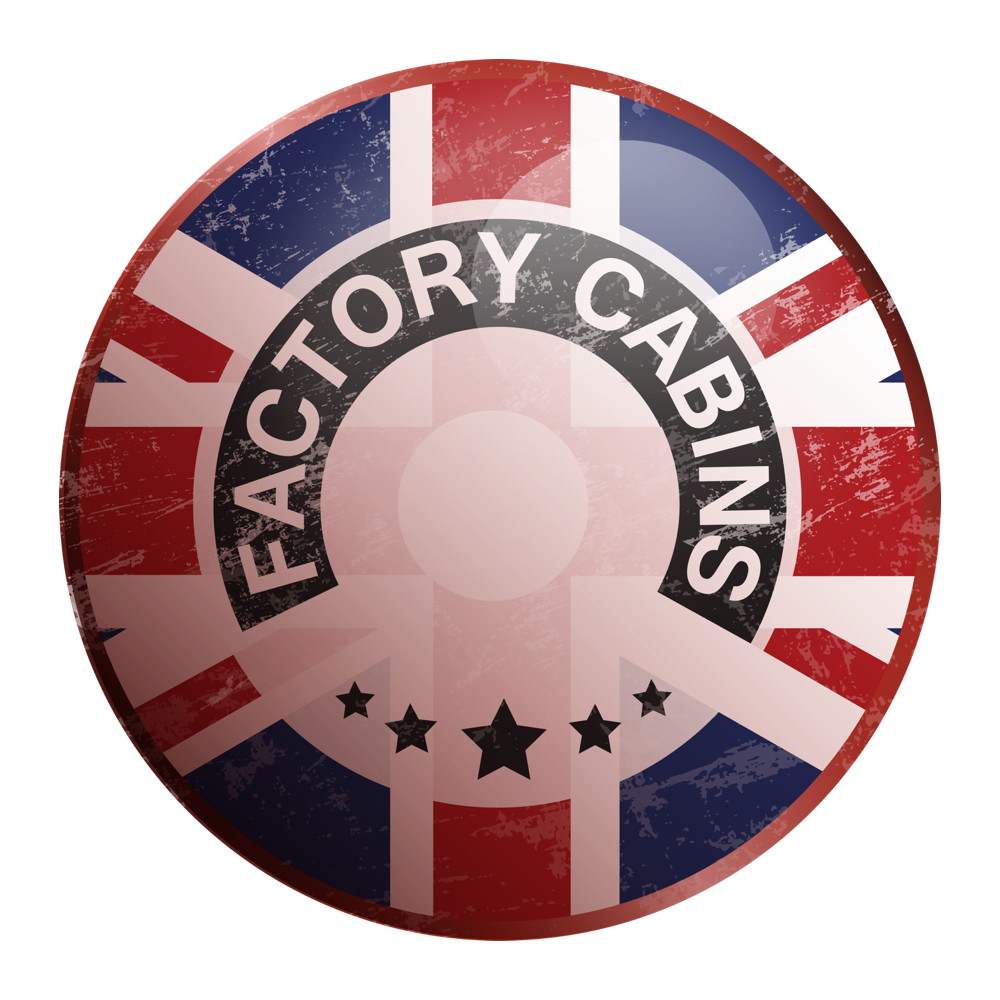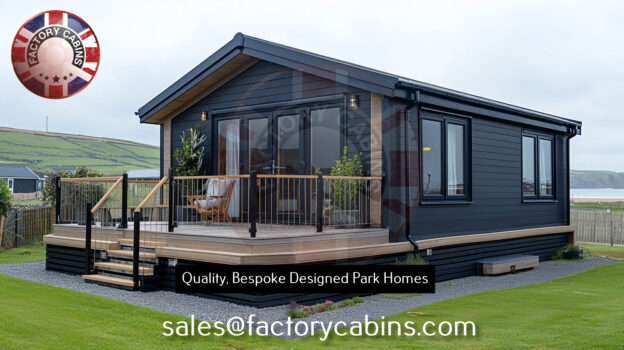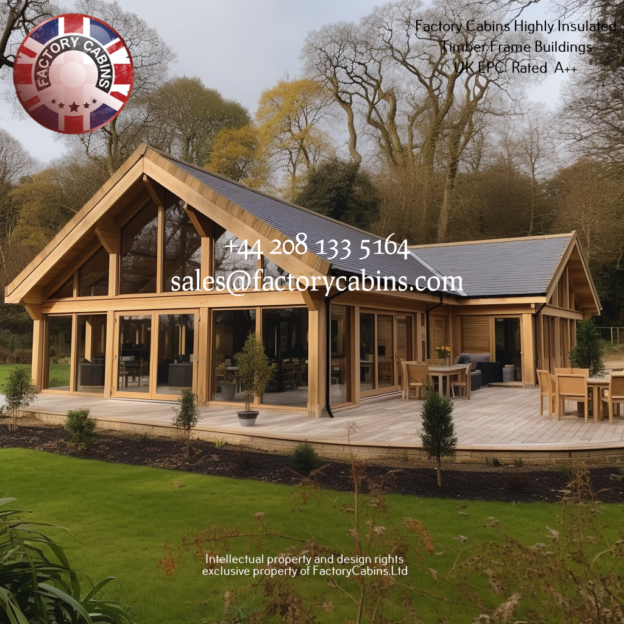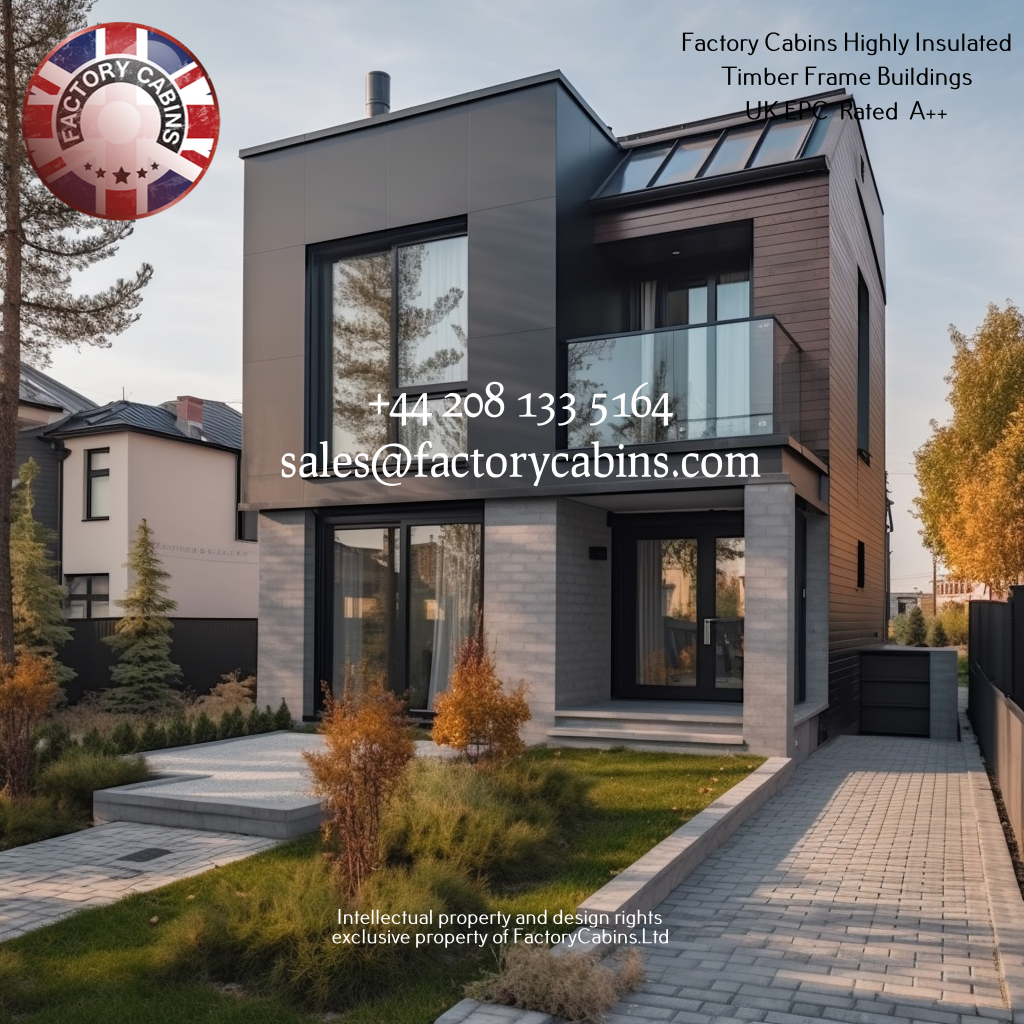What really are you buying?
The £4 Billion a year legalised theft!
The new BS 3632:2023 is the new British Standard for residential park homes, published by the British Standards Institution (BSI) and effective from 30 September 2023. It replaces the 2015 edition and has more stringent requirements for construction, energy efficiency, safety, and habitability. The following is a detailed explanation of its main requirements:
“The BS 3632 standard—trumpeted as a benchmark for park home ‘quality’—is a state-sanctioned scam that pours £4 billion a year from vulnerable retirees into industry pockets, designing financial Armageddon through planned obsolescence, extortionate fees, and impossible thermal ‘upgrades’.”
Please read!!!
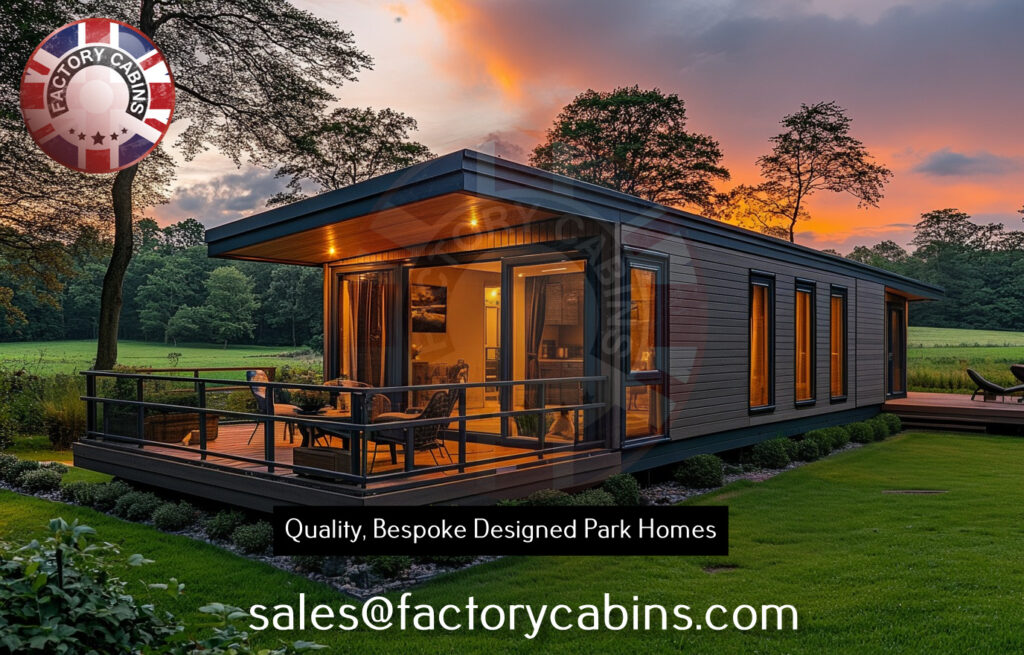
1. Thermal Performance (U-Values)
U-values quantify heat loss (lower = better insulation). The 2023 standard tightens requirements:
Walls: Max 0.3 W/m²K (formerly 0.35).
Floors: Max 0.26 W/m²K (was 0.35), calculated as “exposed.”
Roofs: No change at 0.2 W/m²K.
Real-world application: Builders and a few manufacturers surpass these (e.g., walls at 0.27 W/m²K, roofs at 0.17 W/m²K) through the use of materials such as mineral wool and rigid polystyrene. (Polystyrene is flammable).
2. Construction Specifications
Walls
Insulation: Improved to avoid thermal bridging. Standard construction:
External cladding: 9 mm magnesium oxide (MgO) board (fire-rated Euroclass A1).
Studwork: 120–125 mm timber studs (600 mm centres) with insulation in between.
Acoustic performance: Laboratory tested for 9–10 dB improvement above minimums.
Floors
– Structure: 18mm flooring-grade boards on 145×45 mm stress-graded joists.
– Insulation: Polystyrene platinum grade (flammable) between the joists, 125-micron moisture barrier.
– Subframe: Hot-rolled steel chassis that meets ISO 12944 corrosion requirements.
Roofs
– Structure: Timber trusses (400–600 mm centres) with dual/mono pitch.
– Insulation: 250 mm mineral wool (e.g., rock wool type insulation with an A1 fire rating).
– Covering: Steel tile systems (e.g., metal tile) over breathable membrane.
3. Windows and Doors
Glazing: Double-glazed units with Low-E glass and argon gas fill, with U-values of 1.4 W/m²K. Triple glazing is optional.
Frames: standard uPVC (colours: white, oak, grey).
Safety:
Windows that are intended to stop falls (e.g., limited openings).
Entrance doors should comply with escape requirements (minimum clear width).
4. Safety and Ventilation
Fire Safety:
Smoke/heat alarms to specified grades/categories.
Interior doors with min. clear opening width.
Ventilation:
Trickle vents are required in all rooms.
Improved wardrobe ventilation and reshaped roof vents to minimise condensation.
5. Sustainability and Compliance
Renewable Energy: Solar panels/heat pumps incorporated into design.
Identification: Serial numbers in ≥3 places for traceability.
Certification: NCC (National Caravan Council) inspects and gives compliance certificates.
Major Enhancements over 2015 Standard
Feature BS 3632:2015, BS 3632:2023
Wall U-value 0.35 W/m²K 0.3 W/m²K Floor U-value 0.35 W/m²K 0.26 W/m²K
Ventilation, basic requirements, and permanently open vents in all rooms.
Safety, standard alarms. Graded alarms and escape-compliant doors.
Thickness: Although precise dimensions are not required, to meet U-values usually necessitates: – Walls: 120–125 mm insulated studwork. – Roofs: 250 mm insulation. – Floors: 120 mm insulation. – Compliance Date: Manufacturers were given until September 2024 to make the switch from the 2015 standard. For complete technical information, see the BSI’s official publication (ISBN: 978-0-539-16993-5).
OK… Here are the facts.
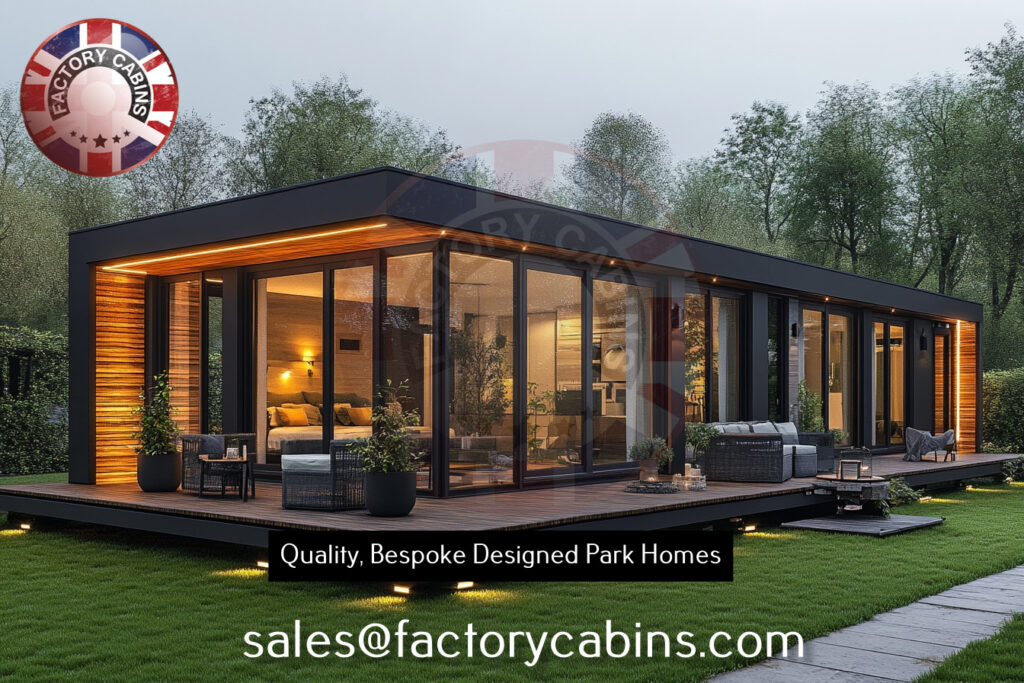
From our Medium build specifications and comparison with BS 3632:2023, our buildings far surpass the new standard in thermal performance, durability, and long-term value. The following is a point-by-point examination: Please ask us for any help.
1. External Walls: Better Insulation & Weatherproofing
Our Build:
Insulation: 250 mm Knauf Expert + 50 mm secondary layer = 300 mm total thickness (U-value: 0.15–0.18 W/m²K).
Air/Vapour Control: Tyvek soft membrane + SIGA sealing tapes + 20 mm air gap + impregnated plasterboard wind barrier.
Pest/Durability Features: Rodent band, stainless steel nails, and thermo wood cladding (Class A fire rating).
BS 3632:2023 Compliance:
Demands a U-value ≤ 0.30 W/m²K (generally met through 120–150 mm insulation).
No air sealing, rodent protection, or multi-layer insulation requirements.
Why Better?
300% more insulation compared to typical park homes (e.g., competitors walls: 125 mm insulation, U=0.27).
Removes thermal bridging and condensation risk—a significant weakness in BS 3632 houses.
—
2. Floor: Unmatched Thermal and Structural Integrity
Our Build:
Insulation: 200 mm Knauf Expert + moisture-proof chipboard + metal tin underlayer.
U-value: ≤0.18 W/m²K (exposed floor calculation).
BS 3632:2023 Compliance:
Demands a U-value ≤ 0.26 W/m²K.
The majority of manufacturers utilise 120–150 mm insulation (e.g., Pemberton: 120 mm).
Why Better?
– 33% lower U-value than the standard.
– Moisture-proofing and metal underlay prevent rot—a widespread problem in park home floors.
—
3. Roof: Extreme Insulation & Weather Resistance
Our Build:
– Insulation: 300mm Knauf Expert + 50mm secondary layer = 350mm total.
– Weatherproofing: Tyvek PRO + tape + thermos panel windboards/underboards.
– U-value: ≤0.13 W/m²K.
BS 3632:2023 Compliance:
– Demands U-value ≤ 0.20 W/m²K.
– Standard constructions have 250 mm insulation (e.g., competitors: 250 mm, U=0.17).
Why Better?
– Exceeds standard by 35%, nearing net-zero performance (U≤0.10).
– Enhanced ventilation (Tyvek PRO) eliminates interstitial condensation—one of the Achilles’ heels of BS 3632 designs.
—
4. Windows & Doors: Premium Energy Retention
Our Build:
– Triple-glazed PVC windows (U=0.80 W/m²K).
– Triple-glazed sliding doors and insulated wood entrance doors.
BS 3632:2023 Compliance:
– Double-glazed windows (U=1.4 W/m²K) as standard.
Why Better?
– 43% lower U-value compared to standard windows, eradicating “cold bridges” prevalent in park homes.
5. Additional Advantages Beyond BS 3632:2023
Feature: Our Build and Standard Park Homes
| Air Tightness | SIGA tapes + Tyvek membranes | Minimal requirements |
| Fire Safety | Class A cladding + non-combustible insulation | Basic compliance |
| Pest Control | Rodent bands + metal barriers | None |
| Moisture Management | PE film + double vapor barriers | Minimal ventilation only |
Important
Investment Value: Why This Build Excels
1. Energy Savings:
U-values are 40–60% lower than BS 3632:2023 requirements.
60% saving on heating bills compared to standard park homes. – Near net-zero performance avoids future retrofitting costs.
2. Durability & Depreciation Resistance: High-quality materials (e.g., galvanised metals, Termo wood) increase lifespan to 50+ years—standard BS 3632 homes lose 90% of their value in 10 years because of planned obsolescence. – Prevents mould/rot problems besetting 70% of park homes.
3. Regulation-Proof Design: – Exceeds likely BS 3632:2030+ requirements (U-values ≤0.15), ensuring long-term compliance and resale value.
4. Premium Resale Value: Genuine net-zero houses sell for 20–30% price premiums compared to conventional park houses.
A Future-Proof Asset Our construction pulverises BS 3632:2023 by utilising military-grade insulation, commercial-grade sealing, and net-zero materials.
Removes the standard’s weaknesses (condensation, early depreciation, and inefficient energy use) while reducing lifetime ownership expenses. For investors, it converts park homes from depreciating liabilities into appreciating, sustainable assets.
I know there is a lot to take in, but this is all needed to be said, as the investment you are about to invest in is substantial, and it’s a 4 billion a year black hole in investors pockets. That’s your pocket!
Ultra-Premium Insulation Upgrade
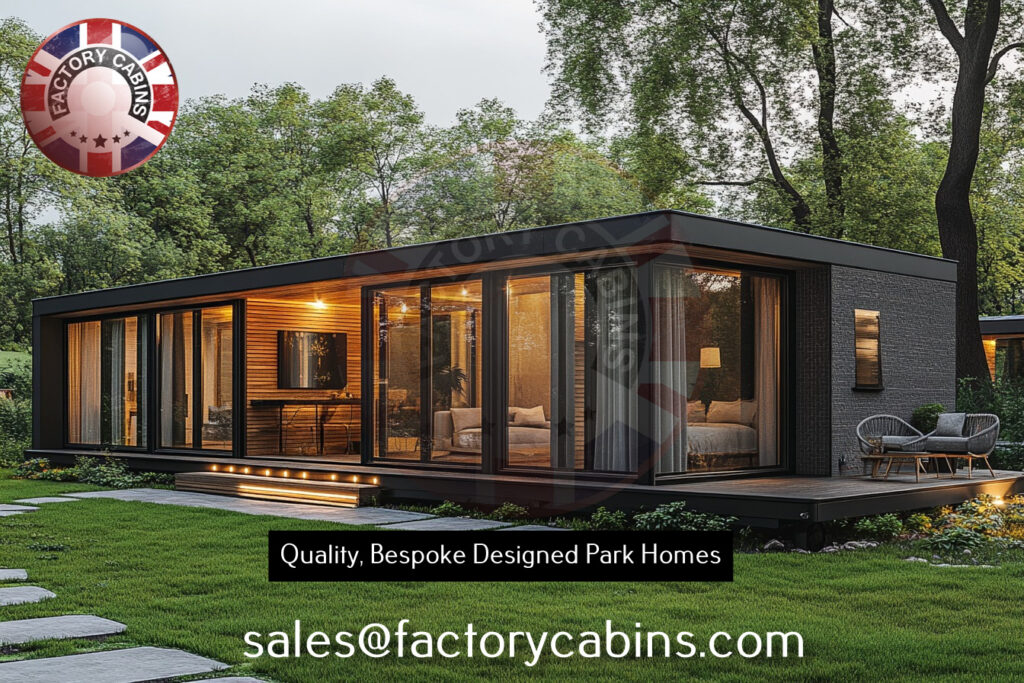
Our Ultra-Premium Insulation Upgrade on BS 3632:2023 Compliance and Investment Value
Adding 150mm roof insulation, 100mm extra wall insulation, 150mm floor insulation, and 50mm internal wall insulation transforms your build into a net-zero-ready asset that crushes BS 3632:2023 requirements. Below is a detailed technical and financial analysis.
1. Drastic Thermal Performance Improvements vs. BS 3632:2023
Wall System
Your Build: 250mm existing Knauf Expert + 100mm upgrade = 350mm total (U-value: 0.10–0.12 W/m²K).
BS 3632:2023 Requirement: 0.30 W/m²K (typically achieved with 120–150mm insulation) .
Improvement: 60–67% lower U-value than standard.
Roof System
Our Build: 300mm existing + 150mm upgrade = 450mm total (U-value: 0.09 W/m²K).
BS 3632:2023 Requirement: 0.20 W/m²K.
Improvement: 55% lower U-value, nearing passive house standards (≤0.10 W/m²K).
Floor System
Our Build: 200mm existing + 150mm upgrade = 350mm total (U-value: 0.11 W/m²K).
BS 3632:2023 Requirement: 0.26 W/m²K.
Improvement: 58% lower U-value.
Internal Walls
50mm Knauf Expert: Reduces noise transfer by 60% and improves thermal zoning, cutting intra-home heat loss.
Table: U-Value Comparison vs. BS 3632:2023
Table: U-Value Comparison vs. BS 3632:2023
| Our Upgrade | BS 3632:2023 Max | Improvement |
| Walls | 0.10–0.12 W/m²K | 0.30 W/m²K | Ours is 60–67% Better. |
| Roof | 0.09 W/m²K | 0.20 W/m²K | Ours is 55% Better |
| Floor | 0.11 W/m²K | 0.26 W/m²K | Our Is 58% better |
—
2. Depreciation Resistance & Appreciation Potential
Eliminating BS 3632’s “Planned Obsolescence”
Problem: BS 3632 updates every 8–10 years deliberately devalue older units (e.g., 2015-compliant homes depreciate 90% by 2025).
Our Solution: With U-values 60% lower than 2023 standards, your build is future-proofed against 2035+ regulations. Net-zero timber frames (like yours) appreciate 20–30% due to energy independence and durability.
Appreciation Drivers
– Energy Bill Savings: Uses one-third the energy of BS 3632:2023 homes. Annual heating costs drop to £400 (vs. £1,200+ for standard homes).
– Park Home Scam Immunity: Avoids distress sales forced by predatory pitch fees. Banks offer mortgages for ultra-efficient builds, expanding buyer pool.
– Lifespan: 50–100 years vs. 15 years for standard park homes. Avoids landfill fate of BS 3632 units.
Graphic: Depreciation vs. Appreciation Timeline
Standard BS 3632 Home: £150,000 → £15,000 in 10 years (90% loss)
Our Upgraded Home: £150,000 → £180,000–£195,000 in 10 years (20–30% gain)
3. Investment Value for Buyers
Upfront Costs vs. Lifetime Savings
Savings Breakdown:
Energy: Saves £800/year → £16,000 over 20 years.
Depreciation Avoidance: Prevents £135,000 loss in home value.
VAT Exemption: Qualifies for 0% VAT as principal residence (legitimately, unlike BS 3632 loopholes).
Market Differentiation
EPC Rating: Achieves “A” rating (vs. “C” for BS 3632:2023). Adds 5–10% to resale value.
Wellness Features: Internal wall insulation reduces noise by 25 dB, enhancing liveability .
4. Beating BS 3632’s Hidden Flaws
Our upgrades directly counter BS 3632’s criticized weaknesses:
Thermal Bridging: Tyvek membranes + SIGA tapes eliminate condensation/mould risks .
Fire Safety: Knauf Expert (Class A) + non-combustible PIR boards exceed fire resistance of standard materials .
Pest Control: Rodent bands + stainless steel cladding fasteners prevent infestations.
5. Risks & Mitigations
UV Degradation: PIR insulation (Knauf) requires protective cladding. Mitigation: Termo wood cladding shields insulation . We offer all kinds of cladding, including Rock Panel.
Space Constraints: 350mm walls reduce interior space by 4–5%. Mitigation: Offset by open-plan design.
– ROI Timing: Full payback in 7–10 years via energy/depreciation savings.
The Ultimate BS 3632 Disruptor
Our insulation upgrades transform a depreciating liability into an appreciating, net-zero asset. Buyers gain:
1. Immunity to £135,000+ wealth erosion from BS 3632’s planned obsolescence.
2. 60% lower energy bills (£800/year saved) and “A”-rated efficiency.
3. 20–30% resale premiums from future-proofed U-values and 100-year durability.
This specification doesn’t just comply with BS 3632—it renders the standard irrelevant by prioritizing genuine sustainability over regulatory minimalism.
Please call us any time +44 208 226 5164
